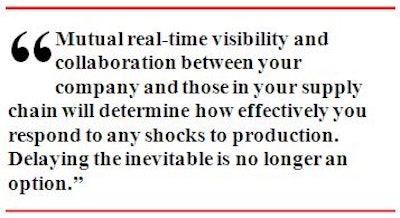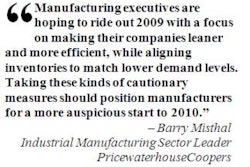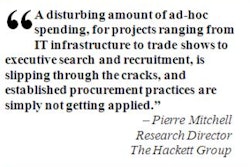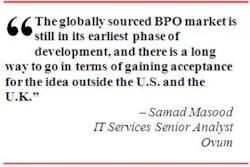
May 6, 2009 — Your supply chain has taken a lot of hits in the past few months, with the prolonged recession, the Somali pirates of the high seas, and now the emerging swine flu epidemic. While the supply chain is the economic lifeline of any business, the frightening thought is that most companies don't have a clue about its health or its vulnerabilities. The swine flu or any other outbreak could be the watershed moment that your business either weathers successfully or stumbles over and suffers irreparable damage.
This isn't the first time that an infectious disease has affected the supply chain. Severe acute respiratory syndrome (SARS) struck Asia in 2003, resulting in a huge disruption in manufacturing and high-tech production, with business-changing ramifications leading back here to the U.S. poultry markets. The swine flu is no different than other problems of the past. But, combined with economic and political uncertainty and the always looming natural disaster, the new flu creates a unique "perfect storm" for supply chain disruptions. The global nature of today's economy also makes the spread of diseases easier due to the mobility of the population and the distribution of global commerce. According to estimates, the economic impact of a pandemic on the United States alone would exceed $100 billion, affecting businesses and the workforce, at a time when companies can ill afford further hits to revenues.
Many organizations know the value of their supply chain but have little understanding of what keeps it alive and healthy. Think of the supply chain as the heart of any business operation, with many different areas feeding into it (e.g., partners or customers). Conversely, the supply chain is a source of nourishment for others in terms of products and services. With the recent piracy incidents off the Horn of African and now the swine flu outbreak, the supply chain is under attack, and the risks have never been greater to organizations. The key to addressing this threat is simple in principle but difficult in practice: real-time inventory visibility and ongoing collaboration across the supply chain.
Companies must know what is in their warehouses as well as in the warehouses of partners, and vice versa. They also should track where they are sourcing from and plan accordingly to reduce any potentially negative effects on production. Can you honestly say you're doing this effectively today — or at all?
For example, industry data show that 99 percent of companies have suffered a supply chain disruption in the past year, with 58 percent suffering financial losses as a result. Yet less than one-third have a plan to deal with future disruptions. Do you know if your supply chain is operating efficiently? Do you have a clear idea of what's in your supply chain? Chances are you don't, and that will cost you dearly tomorrow — either because your competition is already light years ahead of you or because a disruption will irreparably damage your business.
In the past few days, even in its infancy, the swine flu already has created havoc on the business lifeline both globally and domestically. Russia is banning all meat imports from Mexico and the southern United States, and China is banning meat from Mexico, California, Texas and Kansas. In the scheme of things, it takes very little to create a disruption. Consider this worst-case scenario for any organization: If an employee at one of your suppliers or customers in Mexico or at one of your warehouses becomes infected, what do you think would happen?
If the outbreak situation worsens in Mexico, many other areas of the supply chain will be severely affected, creating a domino effect that reverberates throughout the world. If you didn't learn your lesson after the SARS outbreak of 2003, the bird flu and Hurricane Katrina, and if you still don't have visibility across your supply chain, you're running out of time. Surprisingly, technology is the main reason you still have time.
In the past, implementing a warehouse and inventory management system required costly and time-consuming enterprise software. A typical implementation would take six months due to complex integration and additional IT investments. However, with the maturity of software-as-a-service (SaaS), an organization can have real-time visibility and shipping management is as little as 30 days. Because SaaS is Web-based and operated offsite, another inherent benefit is less reliance on an in-house IT department. By deploying a new SaaS WMS, you not only can raise inventory accuracy to over 99 percent and increase new customer acquisition, you can prevent potential hardships in the days and weeks ahead.
History tends to repeat itself, and when it does, the livelihood of your business will depend heavily on what you do at this moment. Mutual real-time visibility and collaboration between your company and those in your supply chain will determine how effectively you respond to any shocks to production. Delaying the inevitable is no longer an option, because while the fundamentals of business haven't changed, you have to be willing to change to keep up with it.











